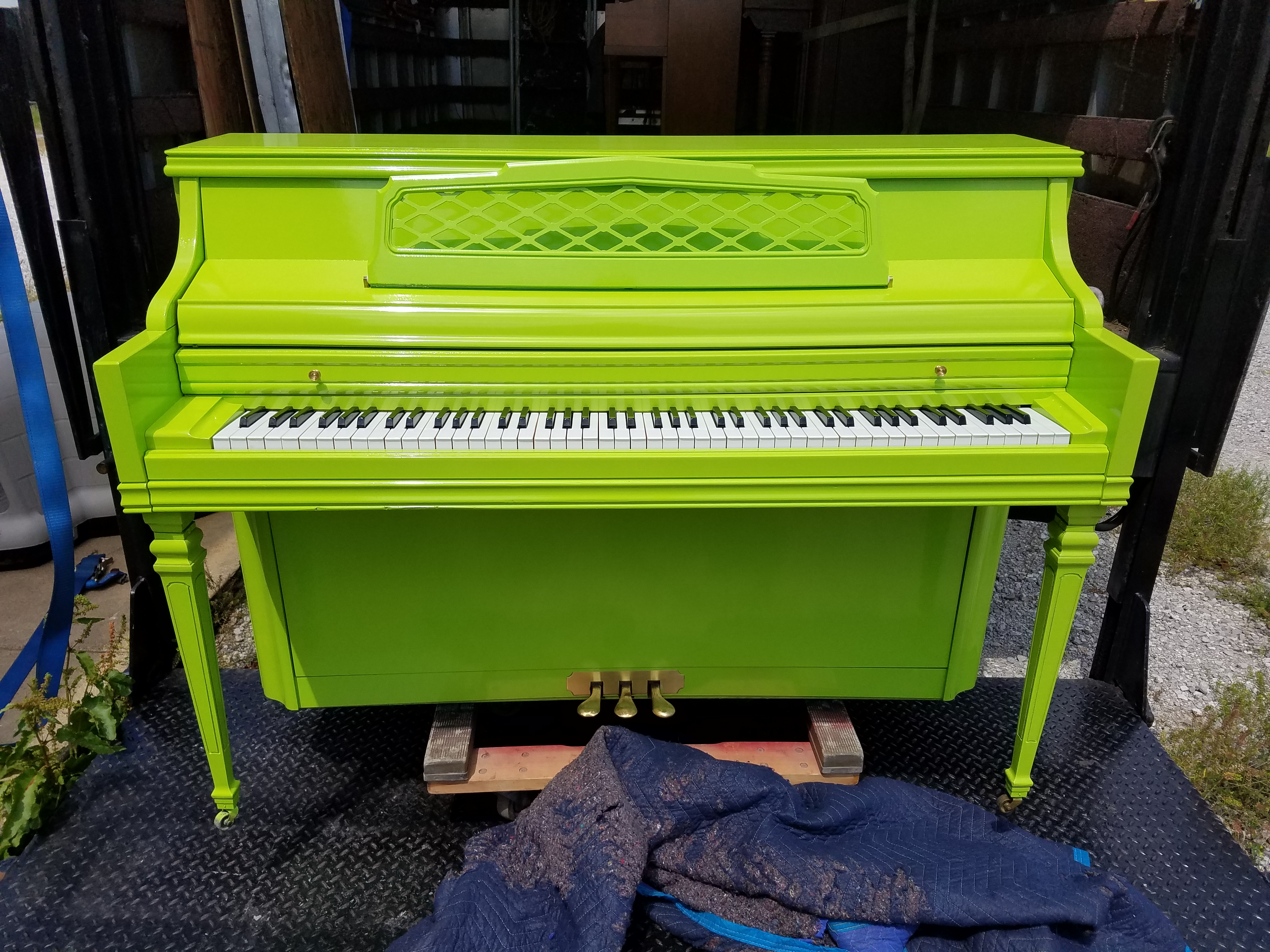

It was exhibited in Philadelphia in 1876. This device entered manufacture, and is generally regarded as the first practical player device. In 1871 a perforated cardboard book was substituted for the barrel, but it was still read using sprung fingers. It used a traditional barrel, but tripped a pneumatic device that inflated bellows rapidly to operate the note. This recognized that a hard strike was needed to throw the hammer towards the keys.

The first device to address the practical requirement of operating a piano mechanism was Forneaux's, of 1863. In 1851, Pape, England, submitted a patent that recognized the need to remove the playing force from the paper, using light springs to read the roll and activate a more robust device which plays the note - a mechanical amplifier. This device applied the entire playing strength to the paper, so would have shredded it rapidly, and the device would have had to be as wide as the piano keyboard. Hunt & Bradish of the USA, 1849, used a roll read by sprung fingers, the springs being strong enough to operate the piano mechanism directly. In 1848 Charles Dawson of England described a more complex travelling valve device which added little to Bain. However, the air flow is not sufficient to drive a piano mechanism. Simple reed and pipe organs using this sort of system are still being produced. In 1847, Alexander Bain described a device that used a paper roll as a 'travelling valve' that allowed air to flow through the reeds of a reed organ. The concept was sound, but the device described was impractical in the way it read the roll and operated the piano. The earliest description of a piano playing device using perforated paper rolls was Claude Seytre's French patent of 1842. At this exhibition were a number of automatic player devices, including the Pianista, that contained the elements which would lead to the player. The start of the player period can probably be seen as the Centennial Exposition of 1876 in Philadelphia, USA. The acceleration of developments leading to the pneumatic 'player' device started in the 1840s and began to reach some recognizable device in the 1870s. This bellows struck the piano key and so played the note. The earliest practical piano playing device was probably the Forneaux Pianista, which used compressed air to inflate a bellows when the barrel pin opened a valve. The development of the player piano was the gradual overcoming of the various difficulties of controlled percussive striking and note duration. This played the note, but at a fixed dynamic and with a tremolo action quite unlike a pianist. The hammers hit repeatedly until the pin was removed.

Barrels do not provide a percussive force, but a relatively gentle switching motion.Įarly barrel pianos moved the hammer back and forwards continuously as the operator turned the handle, but the hammers did not strike the strings until moved slightly forwards by a pin in the barrel. It proved to be difficult for a player device to combine a variable percussive force and a controlled note duration. The entire force required to sound the note must be given by the performer hitting the keys. The piano is a complex instrument, requiring each note to be struck with a different force to control the dynamics of the performance. The playing task is ideally performed by a pinned barrel, and the art of barrel organs was well advanced by the mid-18th century. The power for the notes is provided by air from a bellows system, and the organist or player device only has to operate a valve to control the available air. These devices were later extended to operate musical boxes, which contain a set of tuned metal teeth plucked by the player mechanism.Īn early musical instrument to be automated was the organ, which is comparatively easy to operate automatically. The idea of automatic musical devices can be traced back many centuries, and the use of pinned barrels to operate percussion mechanisms (such as striking bells in a clock) was perfected long before the invention of the piano.


 0 kommentar(er)
0 kommentar(er)
